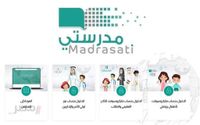As classrooms across Saudi Arabia buzzed with the energy of new beginnings, the Ministry of Education announced the official launch of the 1447-1448 Hijri academic year on August 24, 2025. This year, however, the familiar excitement of the back-to-school season comes with a notable digital twist, as both students and parents increasingly turn to online platforms like Noor and Madrasati to navigate the evolving educational landscape.
According to Al-Mashhad, the Ministry’s declaration on August 24th signaled not just the start of lessons in every region and grade, but also the activation of a comprehensive digital support system. For many families, especially those with children entering first grade, the question on everyone’s lips is: how do we access and use these educational platforms most effectively?
The Noor system, described by Al-Mashhad as one of Saudi Arabia’s most essential online educational tools, has become a staple for monitoring student progress. Noor’s suite of services includes real-time grade tracking, detailed attendance and absence reports, and exam results for all educational stages. This level of transparency gives parents a window into their children’s academic lives, making it easier to offer support where it’s needed most. As one parent put it, “Noor saves us time and effort, and lets us stay on top of our children’s performance.”
Logging into Noor is a straightforward process, but for newcomers, the steps matter. Users—whether students or parents—must first visit the Noor platform and select the appropriate registration category. After entering a username and password, a verification code appears; once entered, the user gains access to the portal’s various sections. The system is designed for ease, but it also emphasizes security. If a user forgets their password, Noor allows login via the national ID number. The process involves requesting a password reset, receiving a verification code by SMS, and confirming personal details such as the school, educational administration, and student’s grade. Once verified, users can establish a new password and regain access. This robust recovery process reassures families that their data—and their children’s records—are secure.
But Noor isn’t the only digital innovation shaping Saudi education this year. As Egypt News reports, the Madrasati platform has emerged as a cornerstone of the Kingdom’s digital learning strategy. What began as a contingency during the pandemic has blossomed into a fully integrated educational ecosystem, connecting students, teachers, and parents in a seamless virtual environment. Registration on Madrasati is inclusive: students and teachers log in using their Microsoft Office 365 credentials, while parents use their Noor system data, ensuring a unified digital identity across platforms. The process is simple—select your user type, input credentials, receive a verification code on your registered mobile, and you’re in.
Madrasati’s impact goes far beyond virtual classes. It offers a holistic educational experience, supporting daily teacher-student interaction, digital performance tracking, and access to a vast online library of educational resources. The platform’s electronic assessment tools—ranging from quizzes to assignments—allow for timely feedback and data-driven insights. As Egypt News notes, Madrasati “is no longer just a technical alternative, but a foundational pillar of Saudi education.”
This digital evolution aligns with Saudi Arabia’s Vision 2030, which seeks to modernize the nation’s infrastructure and equip its youth for a rapidly changing world. The Ministry of Education’s academic calendar for 1447-1448 reflects this forward-thinking approach. The year is carefully structured, with key dates including the National Day holiday on September 23, 2025, a mid-year break starting December 11, and the Eid al-Fitr holiday on March 6, 2026. Other notable breaks include Foundation Day on February 22, Eid al-Adha on May 22, and the end-of-year vacation beginning June 25, 2026. These scheduled pauses, detailed by Egypt News, ensure that both students and teachers can recharge, while the digital platforms guarantee continuity even if circumstances force a temporary halt to in-person learning.
Several other e-learning platforms—such as Taalib, Olyaa, and Al-Amr—are also playing a role in this new academic era, offering electronic lessons and specialized educational content. These platforms complement the Ministry’s official tools, providing additional resources for students seeking to deepen their understanding or catch up on missed material. The integration of Microsoft Office 365 for teachers, as highlighted by Egypt News, underscores the commitment to leveraging global best practices in digital education.
The emphasis on digital learning is not merely a matter of convenience; it’s a strategic response to the challenges of the modern world. With the memory of pandemic disruptions still fresh, Saudi Arabia’s education sector is determined to ensure that learning never stops—no matter what. Madrasati, in particular, is lauded for its ability to maintain educational continuity in the event of school closures, whether due to public health concerns or other emergencies. The platform’s daily communication tools foster a sense of connection and normalcy, even when students are physically apart from their peers and teachers.
For parents, the shift to digital education has brought both opportunities and challenges. The transparency offered by Noor and Madrasati means that families can actively participate in their children’s learning journeys, but it also requires a certain level of digital literacy. To support this transition, both platforms provide detailed guides and customer support, ensuring that no one is left behind. As one education official explained, “Our goal is to make sure every parent, teacher, and student can access the resources they need, whenever they need them.”
Looking ahead, the Ministry of Education appears committed to building on these digital foundations. The integration of electronic platforms into daily school life is expected to deepen, with ongoing updates to features and resources. As the academic year unfolds, students and teachers alike will continue to adapt, discovering new ways to harness technology for better learning outcomes.
The 1447-1448 school year in Saudi Arabia marks more than just another turn of the calendar—it signals a decisive step into the future of education. With robust digital tools, a clear academic roadmap, and a commitment to continuous improvement, the Kingdom is setting a new standard for how nations can blend tradition with innovation in the classroom.
